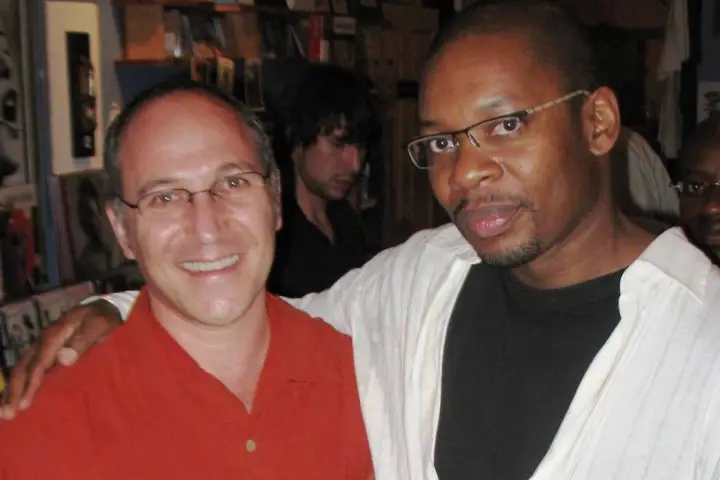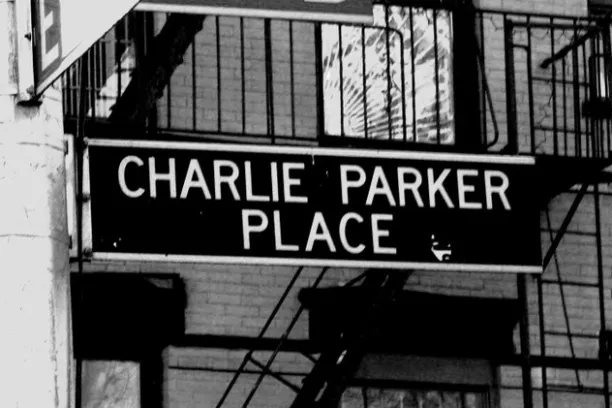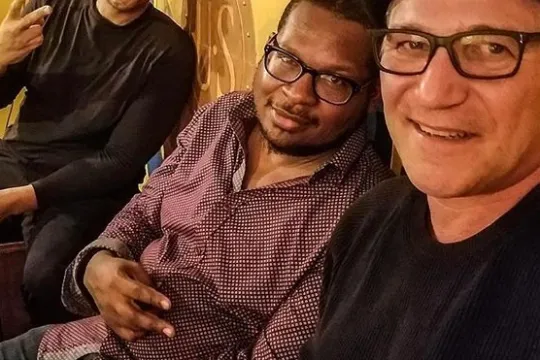New York City, NY
March 18, 2025
Famous Jazz Legends Who Shaped Harlem’s Music Scene
Famous Jazz Legends Who Shaped Harlem’s Music Scene

Overview
Harlem stands as a vibrant testament to the cultural renaissance that shaped modern American music, particularly jazz. In the early 20th century, Harlem emerged as the epicenter of artistic expression during the Harlem Renaissance, a cultural movement that celebrated African American creativity across literature, art, and music.
Jazz, with its improvisational brilliance and emotional depth, became the heartbeat of this era, resonating through the streets of Harlem and transforming it into a haven for musical innovation. This genre, often referred to as the “soundtrack of the Harlem Renaissance,” captured the struggles, joys, and aspirations of the Harlem Renaissance jazz artists, earning its place as a defining symbol of the movement. The movement gave birth to many famous jazz musicians of Harlem.

Image credits: Medford Arts
Key to Harlem’s jazz explosion were its legendary venues. The Cotton Club, with its opulent decor and star-studded performances, became synonymous with the glitz and glamour of the jazz age, showcasing talents like Duke Ellington and Cab Calloway.
The Apollo Theater, equally iconic, stood as a cradle for emerging talent, offering a stage where legends like Ella Fitzgerald and Billie Holiday would rise to fame. These clubs not only entertained but also served as cultural hubs where famous jazz musicians of Harlem, thinkers, and audiences mingled, fostering an exchange of ideas that enriched the jazz tradition.
Harlem’s contribution to jazz transcended its borders, helping to popularize the genre across America and beyond. It was in Harlem’s clubs and ballrooms that jazz evolved, blending traditional African American musical elements with innovative techniques to create something uniquely transformative.
The music’s universal appeal allowed it to bridge cultural divides, influencing generations of artists worldwide.
Today, Harlem’s jazz legacy remains a cornerstone of its identity, drawing visitors from around the globe eager to experience the echoes of its golden age.
Pioneering Jazz Legends of Harlem’s Music Scene
Duke Ellington
Contributions to the Cotton Club
Duke Ellington was a groundbreaking jazz composer and bandleader who played a pivotal role in shaping the jazz scene during the Harlem Renaissance. He’s easily one of the top Harlem jazz legends.
One of his most significant contributions was at the Cotton Club, a premier Harlem nightclub that showcased African American talent to a predominantly white audience.
Ellington’s orchestra helped define the sound of the Cotton Club, blending sophisticated arrangements with swing, blues, and sophisticated melodies.
Signature Compositions and Their Influence
Ellington’s signature works, such as Mood Indigo, Take the A Train, and Sophisticated Lady, are masterpieces that remain influential in jazz history. His ability to craft rich, emotive compositions with complex harmonies and improvisational freedom elevated his status as a jazz innovator. His work widely influenced many generations of musicians and became a cornerstone in jazz education.
Billie Holiday
Impactful Performances in Harlem Clubs
Billie Holiday, one of the most revered jazz vocalists, made an indelible mark on Harlem’s vibrant music scene. Her emotionally charged performances in clubs like Café Society and the Apollo Theater showcased her unique voice and deep connection to the blues and jazz traditions.
Holiday’s raw emotion and soulful expression captivated audiences, making her a defining figure in jazz history.
Key Songs That Defined Her Career
Holiday’s career was defined by timeless classics such as Strange Fruit, God Bless the Child, and Summertime. These songs, often infused with social commentary and introspective lyrics, demonstrated her artistry and commitment to using music as a form of expression and social critique.
Louis Armstrong
His Journey Through Harlem’s Music Scene
Louis Armstrong, known as “Satchmo,” based on his big grin, revolutionized jazz with his virtuosic trumpet playing and distinctive voice. His journey through Harlem’s vibrant music scene began in clubs like the Savoy Ballroom, where his innovative style and charismatic stage presence left a lasting impression on audiences and peers alike. Armstrong is one of the most famous jazz musicians of Harlem.
Collaborations with Other Harlem Legends
Armstrong collaborated with other Harlem legends, such as Duke Ellington and Fletcher Henderson, to create groundbreaking jazz that blended traditional New Orleans influences with new, exciting ideas. His influence on jazz continued to grow, and his collaborations helped shape the evolution of jazz in Harlem.
Ella Fitzgerald
Her Debut and Rise in Harlem
Ella Fitzgerald’s rise to fame began in the heart of Harlem, where she debuted at the famed Apollo Theater. Her distinctive voice, characterized by incredible range, clarity, and emotional depth, quickly won over audiences and critics alike.
Influence on Vocal Jazz
Fitzgerald’s influence on vocal jazz was significant. Her ability to swing effortlessly, coupled with her innovative scat singing, paved the way for future vocalists. Her collaborations with greats like Chick Webb and later with artists like Louis Armstrong solidified her legacy as a jazz icon.
Thelonious Monk
Innovative Styles and Harlem Connections
Thelonious Monk, a true pioneer of modern jazz, is celebrated for his unconventional compositions and groundbreaking approach to bebop. His innovative style, characterized by dissonant chords, rhythmic unpredictability, and unique harmonic structures, found a home in Harlem’s vibrant jazz clubs.
Role in Shaping Bebop
Monk played a significant role in shaping bebop, a genre that emphasized improvisation and technical mastery. His work at venues like Minton’s Playhouse in Harlem helped define the direction of jazz during the mid-20th century, influencing countless musicians and future jazz movements.
Key Contributions to Jazz Evolution
Several artists have played pivotal roles in shaping the evolution of jazz globally. These legends pushed the boundaries of traditional jazz, introducing new techniques, styles, and expressions that continue to influence contemporary musicians.
Global Influence on Jazz
- Louis Armstrong – Often regarded as one of the most influential figures in jazz, Armstrong’s virtuosic trumpet playing and distinctive vocals helped establish jazz as a global art form. His innovations in improvisation and swing laid the foundation for modern jazz.
- Duke Ellington – A master composer and bandleader, Ellington’s contributions to jazz composition and orchestration elevated the genre to new heights. His adaptability to different musical styles influenced jazz across continents.
- Charlie Parker – A pioneer of bebop, Parker’s fast-paced improvisation and complex harmonies revolutionized jazz. His work inspired generations of musicians worldwide to explore new, more sophisticated realms of jazz.
- Miles Davis – Known for his innovative approach to jazz, Davis experimented with various styles such as modal jazz, fusion, and jazz-rock. His influence extended globally, shaping the course of modern jazz.
- Thelonious Monk – Monk’s unique style and unconventional approach to melody and rhythm added a deeply personal touch to jazz. His influence is evident in jazz’s continued exploration of avant-garde and modern forms.
Cultural and Social Movements Associated with Their Music
Jazz has been deeply intertwined with cultural and social movements. From the Harlem Renaissance to civil rights struggles, jazz has provided a platform for expression, community, and change. These Harlem Renaissance jazz artists’ music often reflected the social issues of their time, giving voice to the marginalized and fostering a sense of unity through shared experiences.
Iconic Harlem Venues
- The Cotton Club – A legendary venue during the Harlem Renaissance, The Cotton Club was known for showcasing top-tier jazz artists, including jazz masters from Harlem like Duke Ellington and Louis Armstrong. It played a crucial role in promoting jazz to a broader audience, despite being segregated.
- Savoy Ballroom – This was a significant hub for jazz dancers and musicians, the Savoy Ballroom hosted legendary performances by Count Basie, Benny Goodman, and others. Its historical importance lies in being a space where African American and white audiences could dance and enjoy jazz together.
- The Apollo Theater – Known as the “House of Rhythm,” the Apollo Theater has been a cornerstone of Harlem’s jazz legacy. It provided a stage for jazz greats like Ella Fitzgerald, Billie Holiday, and Lena Horne, showcasing their talent to a wide audience.
- Minton’s Playhouse – A birthplace of bebop, Minton’s Playhouse was instrumental in the development of bebop music, featuring early performances by Charlie Parker, Thelonious Monk, and Dizzy Gillespie. It holds a critical place in jazz history.
- The Lenox Lounge – This was an iconic venue that featured performances by jazz legends such as Miles Davis and Thelonious Monk. The Lenox Lounge symbolized Harlem’s vibrant jazz scene and continues to be celebrated for its cultural contributions.
Legacy of Harlem’s Jazz Legends
Harlem’s jazz legends have left an indelible mark on contemporary jazz. Their innovative approaches and fearless exploration of new musical ideas have inspired generations of jazz artists around the world.
Preservation of Harlem’s jazz heritage is vital, with efforts to maintain historical venues, archives, and educational programs ensuring that the rich legacy of Harlem jazz is passed down through time.
Harlem has been a cornerstone of jazz history, nurturing some of the most iconic legends who shaped the genre into what we know today. From the innovation of Duke Ellington to the soulful voice of Billie Holiday, Harlem’s rich musical heritage continues to inspire musicians and enthusiasts alike. As we reflect on the impact these legends had on jazz, we invite you to explore Harlem’s vibrant music culture, visit historical venues, and experience the spirit of jazz firsthand.
FAQs
Who were some of the most influential jazz legends in Harlem?
Some of the most influential jazz legends in Harlem include Duke Ellington, Billie Holiday, Louis Armstrong, Ella Fitzgerald, and Thelonious Monk.
What role did Harlem play in the development of jazz?
Harlem played a crucial role in the development of jazz by providing a platform for emerging artists, iconic venues, and fostering a vibrant jazz community during the Harlem Renaissance.
Which venues were famous for jazz performances in Harlem?
Notable venues include the Cotton Club, Apollo Theater, and the Savoy Ballroom, where many jazz legends performed.
How did these jazz legends influence contemporary music?
These pioneers laid the groundwork for various jazz styles and significantly influenced modern musicians in both jazz and other genres.
Can I visit historical jazz sites in Harlem today?
Yes, many historic venues and locations connected to Harlem’s jazz legacy are open to visitors and offer live performances and guided tours.
What is the legacy of Harlem’s jazz scene?
The legacy of Harlem’s jazz scene lives on through its influence on global music culture, preservation of historical sites, and the ongoing celebration of its rich musical heritage.
Related Blogs

Harlem Juke Joint Tour
Your Harlem jazz tour guide customizes the best itinerary for each given night, based on the most talented players in Harlem’s most exciting jazz clubs.
185 Reviews

Harlem Juke Joint Tour
Your Harlem jazz tour guide customizes the best itinerary for each given night, based on the most talented players in Harlem’s most exciting jazz clubs.
185 Reviews

Legends of Jazz Tour
This is our premium tour! It features jazz’s international superstars, and also rising stars who deserve wider recognition.
185 Reviews

Legends of Jazz Tour
This is our premium tour! It features jazz’s international superstars, and also rising stars who deserve wider recognition.
185 Reviews

Greenwich Village Jazz Crawl
Intimate Greenwich Village Jazz Tour to discover and explore two hidden jazz haunts and the sites where Billie Holiday, Charlie Parker, and Bob Dylan made history.
185 Reviews

Greenwich Village Jazz Crawl
Intimate Greenwich Village Jazz Tour to discover and explore two hidden jazz haunts and the sites where Billie Holiday, Charlie Parker, and Bob Dylan made history.
185 Reviews

Private Tour
We’ll design your private jazz tour based on your tastes and our extensive knowledge of musicians, clubs and speakeasies throughout the city. We know what is happening nightly on and off-the-beaten-path.
185 Reviews

Private Tour
We’ll design your private jazz tour based on your tastes and our extensive knowledge of musicians, clubs and speakeasies throughout the city. We know what is happening nightly on and off-the-beaten-path.
185 Reviews

Gordon Polatnick
Gordon is the founder of Big Apple Jazz Tours. What started as a personal challenge to discover and document all of New York’s hundreds of jazz joints and to establish Harlem’s first jazz day club, has now blossomed…
Gordan Patrick Full Bio

Amanda Humes
There’s no one in New York City like Amanda! Equal parts sass, smarts, and customer service – Amanda is the Harlem resident, Columbia University graduate, and…
Amanda Humes Full Bio
